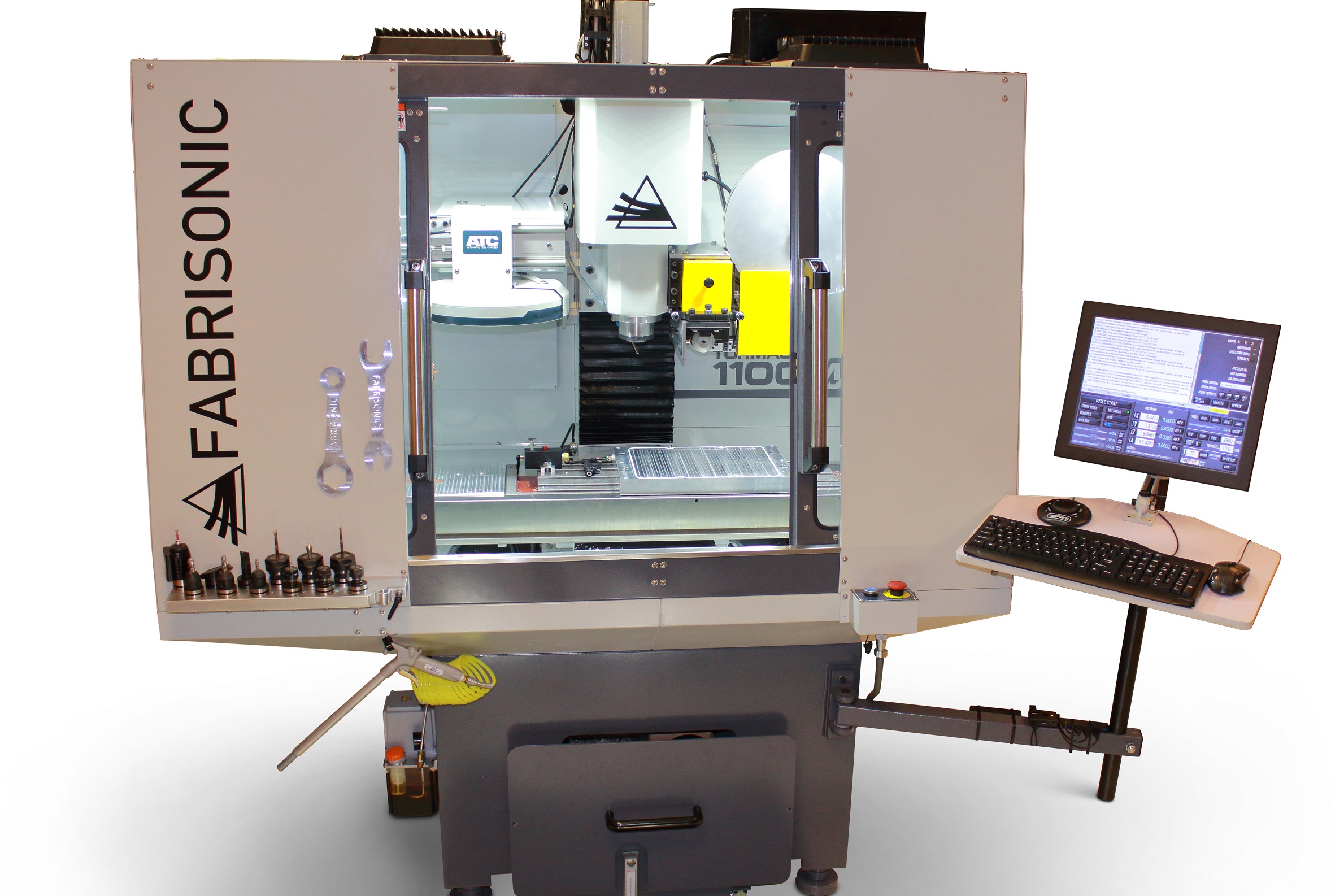Fabrisonic has a very unique 3D printing technology. The company’s UAM (Ultrasonic Additive Manufacturing) process can take layers of metal tapes and through ultrasonically welding them and then machining them create 3D objects. Ultrasonic vibration has been used as a welding technology before but the firm has commercialized it for our market now. UAM lets you do very exciting things such as joining different metals, work with relatively inexpensive feedstock and embed sensors in metal parts. Now Fabrisonic is lowering the cost to get started with their technology by offering an entry-level machine, the SonicLayer 1200 for $200,000. Often times Fabrisonic can seem kind of a Don Quichote of 3D printing pioneering an own path that is very different than other companies all working on the same technologies. Can the firm go it alone? Or will it succumb to a VHS wars kind of pressure where Video 2000 lost to the wider adopted VHS? Will it find a niche such as the one it is trying to carve out in embedded sensors? Or will it find broader use but for heat exchangers or exotic blends of metals? We sat down with Fabrisonic’s brilliant Mark Norfolk to find out.

The New Fabrisonic 1200
How is Fabrisonic doing?
Were continuing on our growth curve. We’re a very small firm at the moment consisting of 8 people. In the next year we’ll be adding five people. We want to be a growing, strong & viable business. We’re all engineers so we want to build solid businesses.
We are a spin out of a nonprofit, EWI. So far we’ve been bootstrapping the business. Its a question of slow and steady with a focus on the long term.
At the moment we’re evenly split between service and machine sales. In house we operate five of our own machines. We’ve just launched our Fabrisonic 1200 which is a very capable machine that lowers the price point at which people can use our technology.
We’re very curious about emerging applications in electronics, sensors, IoT. One key aspect of our technology is that we can integrate electronics into metal structures. We see expanding interest into that application in process monitoring, industry, aerospace and other industries.
What are some examples of things that people are making with Fabrisonic?
One example is an embedded fibers optic sensor inside a metal part. What we can get from this is the actual load data from the component. In the demonstration case, it is a part of a wing. What our customers can do with this is to monitor the strain on the wings for example. This kind of application can be very useful in commercial aerospace. You could also track strain on the landing gear on every landing to predict failure or maintenance.
What is also being done is embedded thermocouples so we can get precise temperature measurements in specific places in a reaction vessel. Some of our customers want to very precisely measure temperatures in chemical reactions and use Fabbrisonic to put sensors exactly where they need to be. By placing the thermocouples inside the reaction vessel they can get the right data to adjust and control the reaction.
Another example of a sensor is inside a base plate used for PBF for metals. The embedded fiber optic cable in the base plate can monitor the process while the PBF machine is running. We can determine the strain, magnitude, and vector during the print job, Besides metal 3D printing such careful monitoring would be advantageous in many machines and processes.
Another application that we’re seeing is piezo microphones being used to detect cracks in metal structures to monitor failure or fatigue. We’re making sensors to measure magnetic fields and also making waveguides.
We’re helping to tackle challenges in health monitoring and also of things like wings, structures or a pole.

Embedded fiber optic strain sensors.
What are some of the advantages of your technology?
One of the biggest benefits is that we’re a solid state process. We’re not melting the part or changing the metallurgy of the part. Material cost is also low at $5 to $10 a pound. Besides embedding electronics in metal, we can use dissimilar metal and join them together. We can make gradient materials as well. A lof what you can do with our technology is emerging. We’re doing things whereby a part can become a barcode, that is serialized through the different thicknesses of the part itself. This ensures that the part itself can vouch for its own tracing and security.

A copper and aluminum part.
Why is 3D printing heat exchangers so promising?
It lets you get the coolant exactly where you want it. Without a lot of different production steps. You can pull out mass, increase performance and do part consolidation all at the same time.
With electric cars will there be possible demand in that arena for your technology?
For sure. We are seeing a lot of things where 3D printing could reduce part count and improve performance in electric vehicles and batteries. Structures could be heat sinks as well for example. Cool things.
What work has been done on microchannel heat sinks in heat exchangers?
We’ve made 10,000th of an inch channels in heat exchangers. This lets you get more surface area, in order to get more heat out faster. You can then integrate that anywhere in your structure. Or by varying dissimilar metals get different temperature gradients. The thinking has changed, your thermal unit is also structure.
Can you make gradient/functionally gradient parts with Fabrisonic?
The big thing for gradient, for us now, is to use it where is a transition; in temperatures for example. When monitoring or controlling for CTE (Coefficient of Thermal Expansion) we can use the layering of different materials to avoid sharp temperature differences. Fatigue cracks can also be avoided through this method.

60 Replies to “Interview with Fabrisonic on Embedding Sensors in 3D Printed Metal Parts”
Comments are closed.